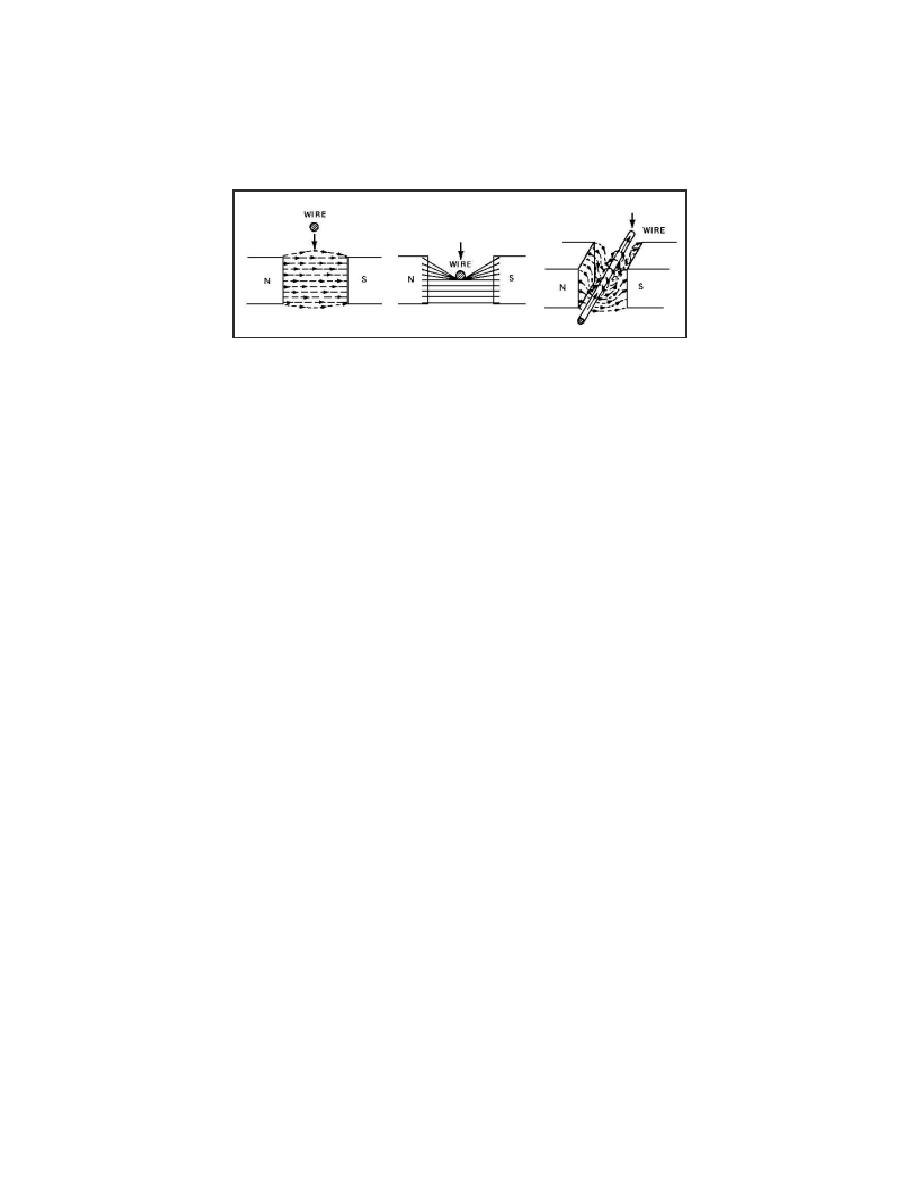
Lesson 1/Learning Event 1
Now, let's see how mechanical force can be used in creating an electric current. Using a horseshoe
magnet, a conductor (such as a copper wire), and a sensitive, current-indicating meter (such as a
galvanometer), you can demonstrate this.
FIGURE 10. ELECTROMAGNETIC INDUCTION.
Connect the meter to the conductor and then move the conductor downward between the poles of
the magnet. When this is done, the indicating needle on the meter will momentarily move away
from zero indicating a surge of current flow. If the conductor is then held still in the magnetic
field, the meter needle will not move from zero, indicating that there is no current flowing in the
conductor. This shows the magnetic field causes free electrons to move only when the conductor
is in motion, moving across the lines of force.
The amount of voltage and resulting current flow created (induced) in the conductor can be
increased by several methods. The faster the conductor is moved across the lines of force, the
greater the voltage. Also, increasing the strength of the magnetic field will increase voltage.
Another method of increasing voltage is to wind the conductor into a coil so that several turns of
the coil can be passed through the magnetic field at one time.
15



 Previous Page
Previous Page
